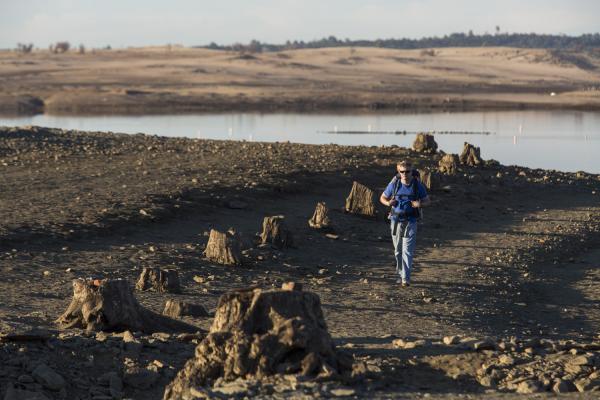The United States imports vehicles, equipment, fresh produce and other goods from Mexico. That list may soon include water too, now that a San Diego County water district is looking south for help to diversify its supply.
The Otay Water District serves a population of 220,000 people in southeastern San Diego County, in a service area spanning 125 square miles, from the border city of Chula Vista to the unincorporated areas in Jamul. It currently buys potable water from the Metropolitan Water District of Southern California, the San Diego County Water Authority and the Helix Water District.

A consortium of international companies plans to build the largest desalination plant in the West in Rosarito, Mexico. A water district in California, which has been suffering from a yearslong drought, is interested in buying some of that water and piping it north. File Photo by Ken James/UPI | License Photo
But it’s also seeking more control over its supply, so it has taken the unusual step of seeking to import water from Mexico – the first such venture by the United States.
A consortium of international companies plans to build the largest desalination plant in the West in Rosarito, Mexico, a coastal resort city in Baja California, about 15 miles south of the U.S. border. Otay Water District is interested in buying some of that water and piping it up north.
Plans for the plant were mired in legal squabbles for a while, but things moved forward in 2016, and if the consortium gets its financing in line, it will break ground in May. The first phase, with 50 million gallons of water in daily capacity, will be completed in 2019 or 2020.
Otay Water District has been pursuing plans to import desalinated water for several years and has applied for a Presidential Permit to construct a water pipeline that would cross the border. It expects to import about 15 million gallons a day, but that amount could increase, eventually accounting for two-thirds of its total potable water supply if the terms work out.
Cost of imported water
Piping water from Mexico would mean Otay Water District is relying on an imported resource, so how does it expect to have more control over its supply?
Mark Watton, general manager of Otay Water District, explains that it would be a closer source and a steady supply, unlike sources that come through the Sacramento-San Joaquin Bay-Delta, which make up part of the supply for wholesale distributors such as the Metropolitan Water District.
The amount of water that SDCWA gets from the Delta also varies from year to year. In addition, SDCWA gets water from the Colorado River, for which it has high priority through a transfer agreement with the Imperial Irrigation District, but Watton says the Rosarito plant would offer the Otay Water District better control over supply.
However, it will not offer major financial savings. “We are looking to replace our current water sources at the same or better price. Right now I pay the Water Authority about $1,700 per acre-foot [325,851 gallons] and the goal for us is to get the supply from desal [desalination] at the same cost,” he said. “It’s a little tight, but we still think it’s feasible.”
Click here for full article on upi.com
Source: http://www.upi.com/



